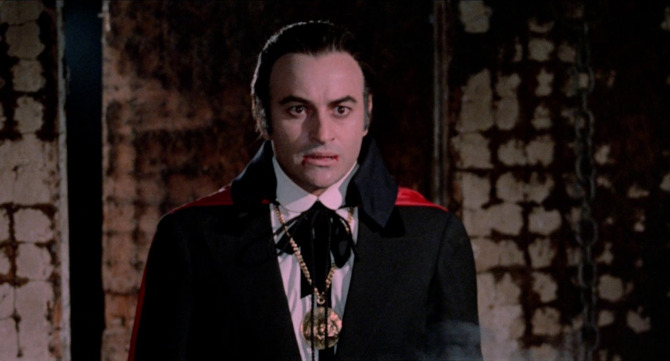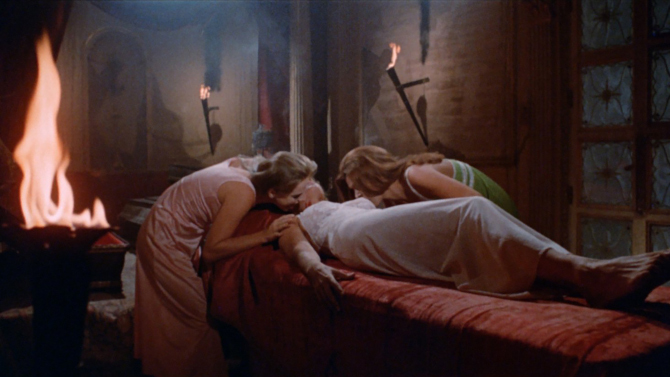Building upon ages of vampiric lore whilst finding its own creative place in a lengthy fang toothed oeuvre, Spain’s Count Dracula’s Great Love (1973), co-written and directed by Javier Aguirre, aims for fusing sensuality and sensitivity with a mesmeric gothic atmosphere. . . and let’s not forget some 70s era gore (for good measure).
Following a group of four women: Senta (Rosanna Yanni), Karen (Haydée Politoff), Elke (Mirta Miller), and Marlene (Ingrid Garbo), and a male friend, Imre Polvi (Víctor Barrera), they are unfortunate enough to have carriage trouble whilst traveling through the Carpathian Mountains (though, at least, the women all seem to have a ridiculous amount of lingerie – priorities, right?).
Stranded in the middle of nowhere, the only building nearby is a long abandoned sanatorium – the type of edifice that carries with it long fabled ghost stories. Having been recently purchased by a wealthy and private eccentric, Doctor Wendell Marlowe (Paul Naschy), he plans on fixing it up and restoring it back into some sort of medical facility.
Welcomed into the ornate and almost gaudy though decrepit structure by its new owner, reception from the girls is mixed – from utter fear to flirty delight. Settling in for the night (if one can really settle into such a place), Karen soon has a start when she spots a supposed vagabond who looks like his neck has been chewed on. . . only the beginning of some very strange happenings (they will be stranded at the locale for a week – which is when the Doctor’s next delivery comes). Soon, some of their friends disappear. . . could it simply be a romantic tryst in the surrounding woods, or something more sinister?
As you might have guessed (if you’re into these types of movies), frequent Spanish monster man Naschy is in fact playing Count Dracula with a nom de plume (this is no spoiler, as it is revealed very early on in the narrative). Playing a refined and reserved man, he is, perhaps unexpectedly, not a super-powered purely evil being like in other iterations. With more sensitivity and emotion than most vampires (it sometimes seems to hinge on a slight depression), this is perhaps due to the fact that he cannot regenerate to his strongest form until a virgin woman chooses to love him of her own accord. Causing a crisis, he treats the women well (attempting to slowly seduce them over the week they spend at his home) while they are put in danger by his mindless minions (who have been turned by his feedings). . . limited beings who are simply drawn to pumping veins and cannot control their actions (unlike their ancient creator).
Filled with a heady atmosphere that fuses erotic sensuality with gothic horror (something they clearly pull from the 1931 Universal Lugosi film), its location plays a big part in it. With its dilapidated ornate gilded design, lavish gardens, impressive swimming pool, ancient cobwebbed library, fiery hearths, and eerie catacombs (which holds a secret coffin surprise), it oozes plenty of thrills and chills. It is a landscape worth exploring, and gives the characters room to grow (and then often die – there are a few doozies). There is also a fascinating scene that takes place at a local farmer’s home – a moment well worth noting. Though this movie is not without its flaws; its pacing is slow (which is not necessarily a criticism), while some of its editing and transitions fail to unite a completely congruous story.
A rather unknown horror flick worth adding to your vampire watching list, Count Dracula’s Great Love is an oft traditional and enjoyable gothic feature that is not without its flaws. Yet, despite some issues, it does its job, living on its uncanny atmosphere, some solid performances (including its unique take on Dracula), and a creative enough story. Though I might not stake my life on you loving this one, I wouldn’t be insane in thinking you might enjoy finding your way to this sanatorium.
This film can be watched in Spanish with English subtitles, or in dubbed English



